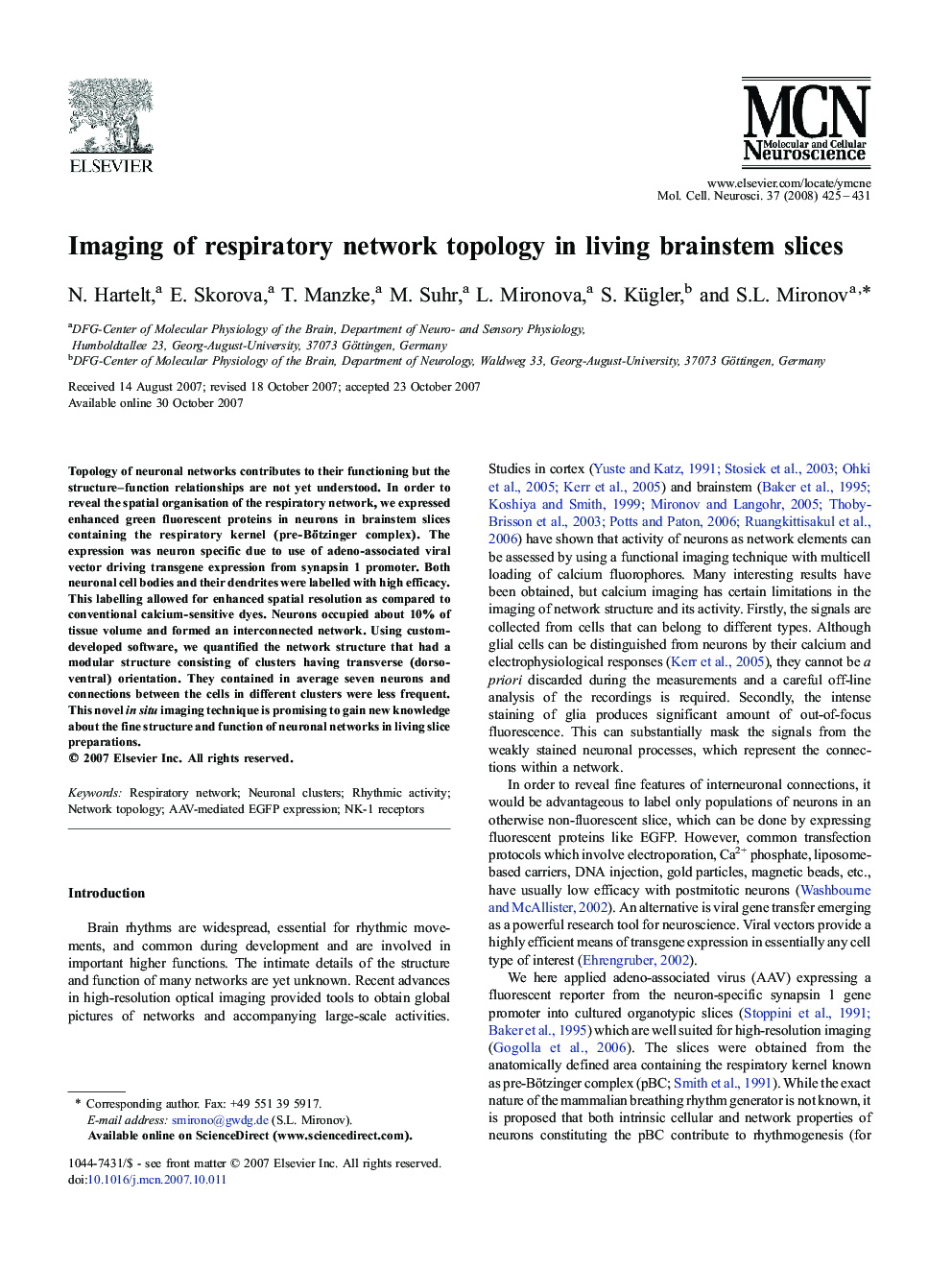| Article ID | Journal | Published Year | Pages | File Type |
|---|---|---|---|---|
| 2199237 | Molecular and Cellular Neuroscience | 2008 | 7 Pages |
Topology of neuronal networks contributes to their functioning but the structure–function relationships are not yet understood. In order to reveal the spatial organisation of the respiratory network, we expressed enhanced green fluorescent proteins in neurons in brainstem slices containing the respiratory kernel (pre-Bötzinger complex). The expression was neuron specific due to use of adeno-associated viral vector driving transgene expression from synapsin 1 promoter. Both neuronal cell bodies and their dendrites were labelled with high efficacy. This labelling allowed for enhanced spatial resolution as compared to conventional calcium-sensitive dyes. Neurons occupied about 10% of tissue volume and formed an interconnected network. Using custom-developed software, we quantified the network structure that had a modular structure consisting of clusters having transverse (dorso-ventral) orientation. They contained in average seven neurons and connections between the cells in different clusters were less frequent. This novel in situ imaging technique is promising to gain new knowledge about the fine structure and function of neuronal networks in living slice preparations.
